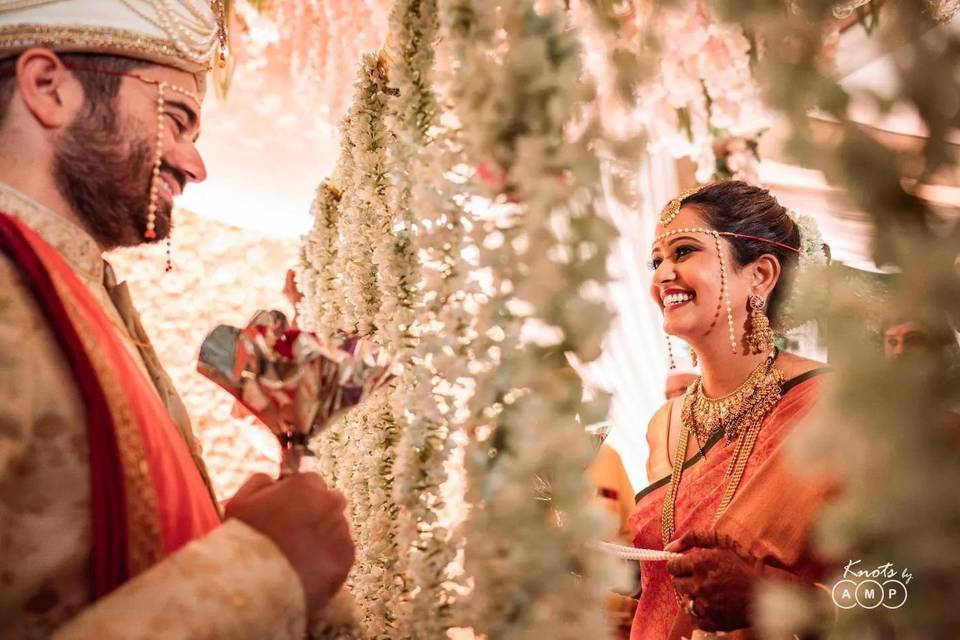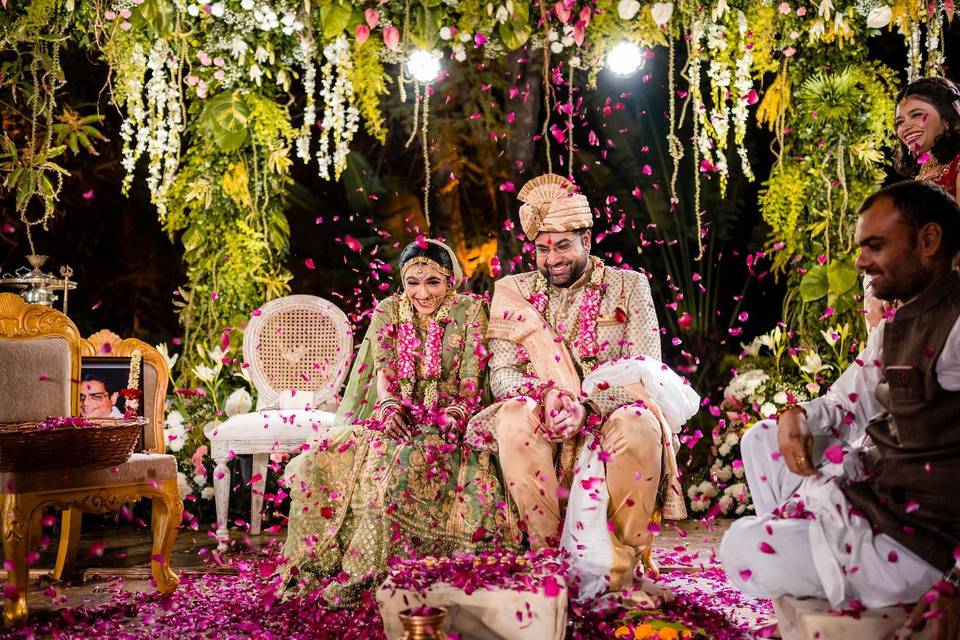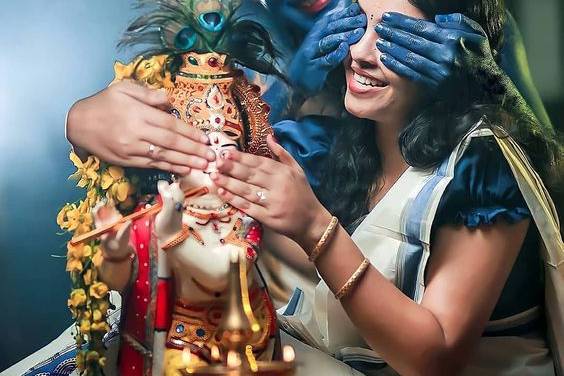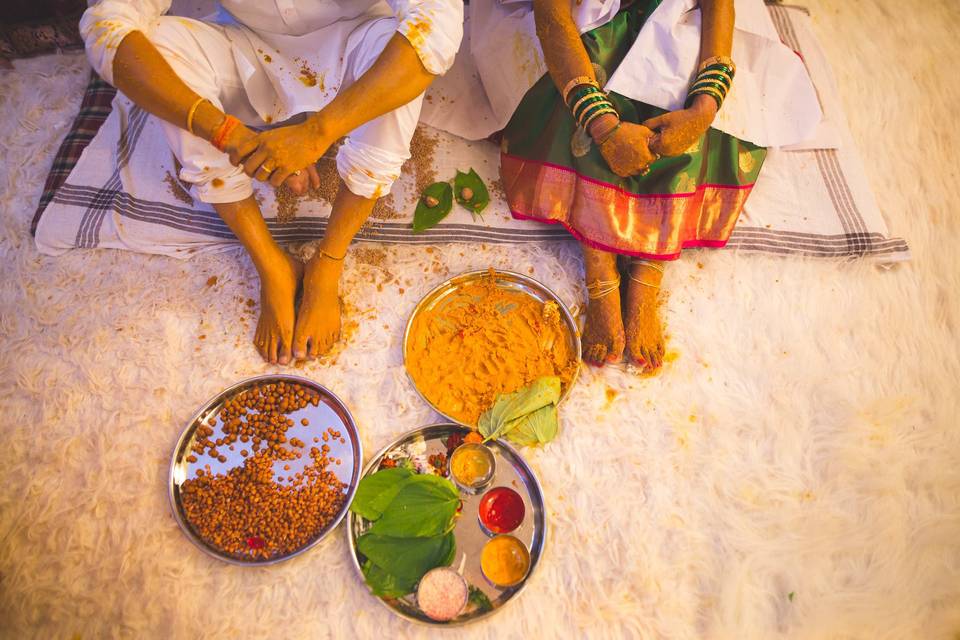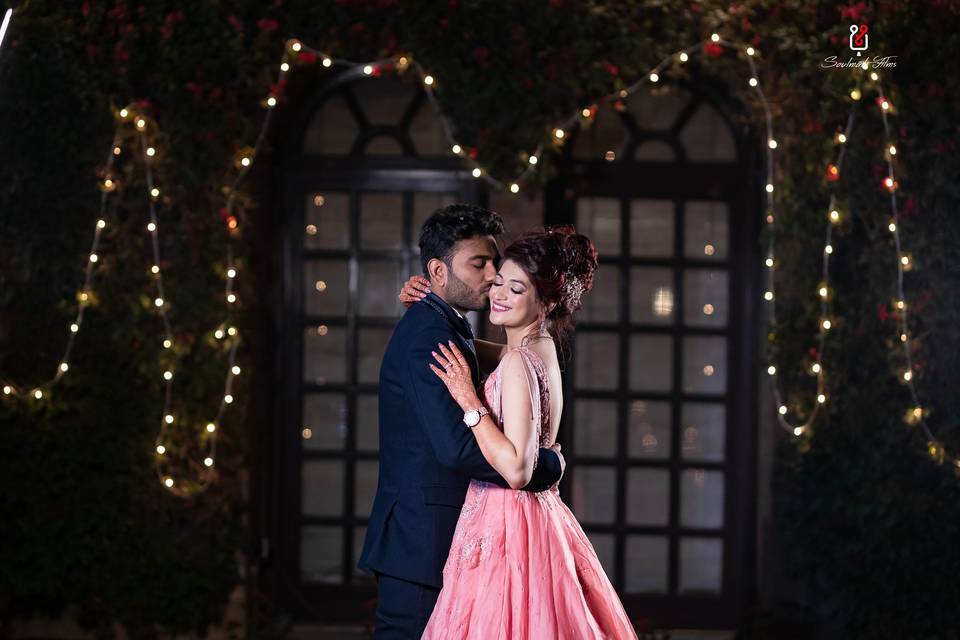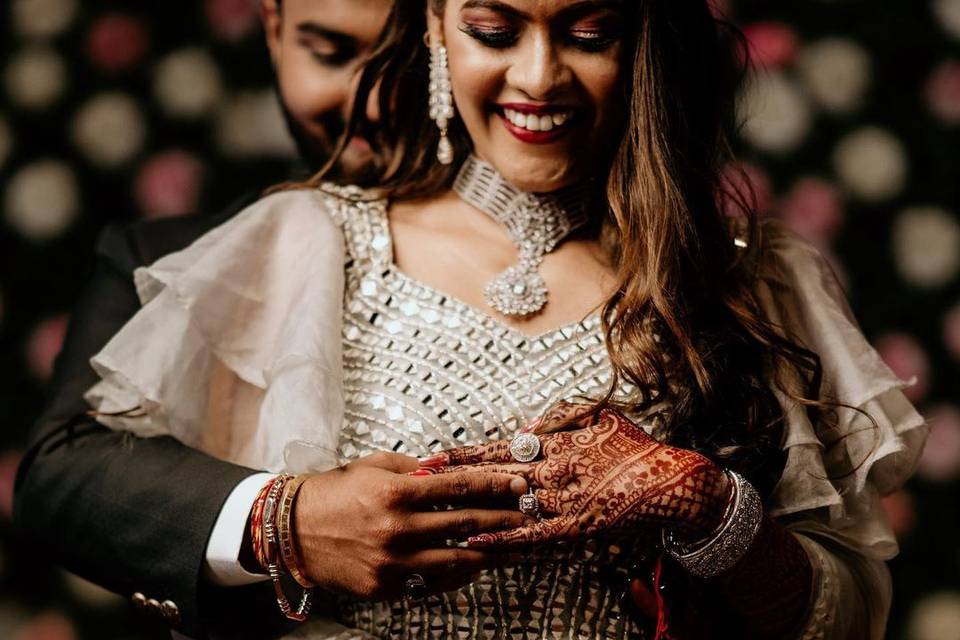Saat Phere - The 7 Vows & Different Rituals in India
The 7 sacred circles that a couple takes around the holy fire are not just any ritual in Indian Vedic weddings. They are much more than just a custom. Read to know more about this magical tradition.
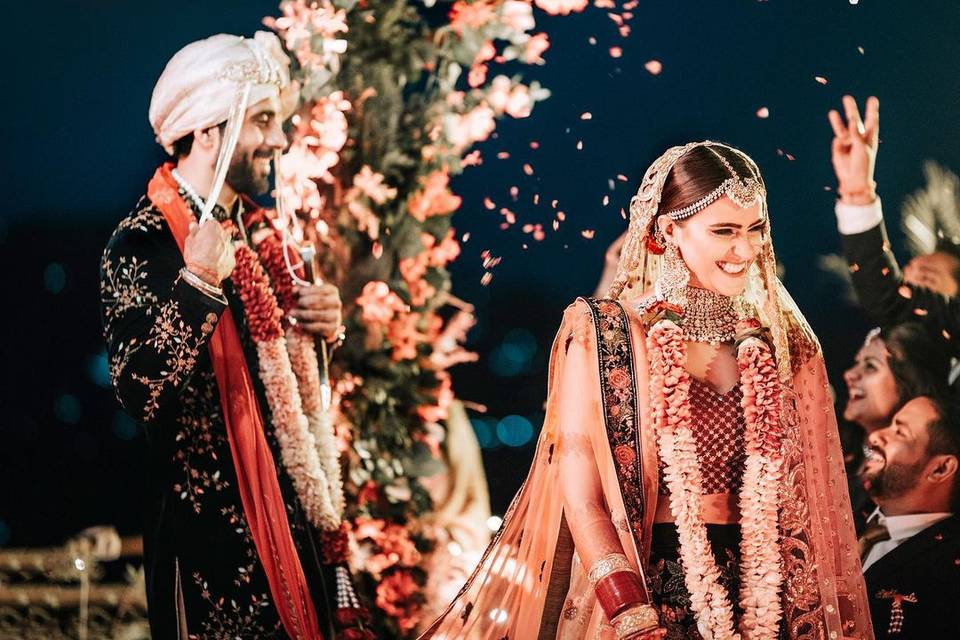
Weddings in India are a magical affair. From traditions that have meandered through the changing times and made their place in the fun and frolic that surrounds the millennial weddings to the latest fashion that enhances the wedding wardrobe - every element of an Indian wedding is embedded with millions of emotions. In fact, if you really think about Indian weddings - it is the rituals in a wedding that makes it exhilarating and inspiring, filling the air with positive excitement. While the bride's mother is waiting at the gate looking her best in a gorgeous saree or lehenga to welcome the groom with her blessings and a puja ki thaali, the bridesmaids and sisters of the bride wait on their toes while blocking the entrance to only allow the groom inside in exchange of money.
Among these endless fun rituals, there is one tradition that plays a pivotal role in Hindu weddings or Vedic weddings in general - the 7 pheras. The 7 steps taken by the couple around the sacred fire make up a significant portion of a Hindu wedding ceremony. Post the completion of the last phera around the holy fire, the couple is declared married.
The ritual of taking 7 circles around the pious flame that burns in the centre of the wedding Mandap is known by many names in the Hindu and Vedic cultures. In fact, people often take 14 pheras or 4 pheras - the concept at the crux of this ritual remains immaculate.
The 7 Vows
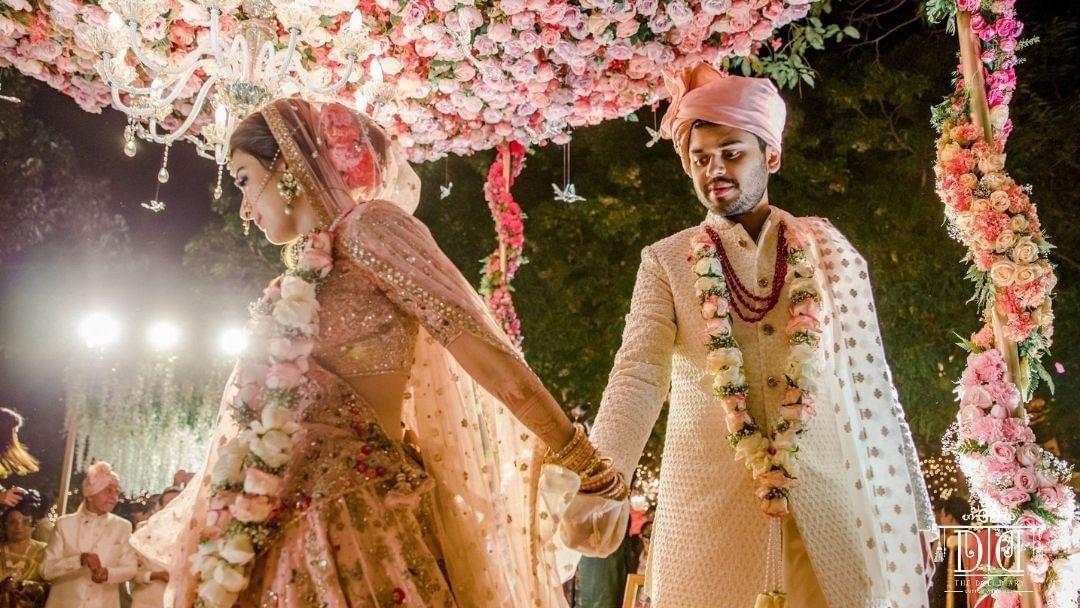
Did you ever wonder why the number 7? Well, it is a spiritually aligned numerical for sure but some even tend to go ahead and explain this with mathematics. The mathematical approach explains that every circle consists of 360 degrees and the only single-digit between 1-9 that cannot divide 360 is the number 7. The bride and groom circle the fire 7 times to ensure that nothing can divide their relationship. Now we ask why not 11 and 13? Well, if 7 rounds confirm a forever after (ritually) then why do more? And we must not forget that many the cultures begin the wedding day festivities with the bride and groom's fast until the ceremony.
Now that being sorted, do you wonder what each of these 7 pheras mean? It is no wonder that each of the 7 pheras might have some deeper meaning and they, in fact, do.
The first phera, alludes to nourishment and shelter. Here the groom takes lead and promises to take care of the food and nourishment for his wife and future generations/children. This implies that he will take care of their basic needs like food, shelter and financial requirements.
The second phera, implies resilience. This is a vow taken by the couple where they ask the almighty for strength to endure any storm that enters their lives. They pledge to support each other through thick and thin - be it mental, physical or emotional turbulence.
The third phera, speaks of wealth and prosperity. The couple seeks to be blessed with affluence in their married life. They aspire to make life better for each other as well as their descendants - both materialistically as well as spiritually. In this vow, the bride and groom also make a promise to remain loyal and faithful to each other.
The fourth phera, is all about the family. Fortifying the bond with the family is of utmost importance. The fourth vow is also about giving unconditional love and respect to each other. While the groom's vow acknowledges the bride for fulfilling and whole and the bride promises to love him forever.
The fifth phera, is where the couple seeks the blessings of the almighty for noble, healthy and joyful children. This is also the vow where the couple promises to be friends and partners for life to be responsible parents to their offspring and nurture them.
The sixth phera, the couple prays for health. They wish for a healthy and abundant life together - a life free of diseases or any mental ailments, that will then enable them to live a fulfilling life embedded with delight.
The last and seventh phera, which declares the couple companions for 7 lifetimes is one that is a promise. They promise to strive for wisdom and maturity to deal with their day to day life in mutual understanding, stability and faith. This vow pronounces them inseparable for life.
These vows are a pious and beautiful way to start your life together with your other half. The "saat pheras" are the threshold of the "saat janam" that you and your partner are set to be together for.
Since this Indian wedding ritual is of utmost significance in the ceremony and it is also an essential part of the bond of marriage that two souls enter through the marriage, we want to throw some light on the traditions and how exactly it is honoured in various cultures.
Saptapadi - Telugu, Malayali, Kannada, Tamil Weddings
The southern peninsula of our country is enriched with cultural diversity and while the bride and groom do take 7 rounds around the holy pyre, these 7 circles are called Saptapadi. In Telugu, Tamil, Malayali and Kannada weddings the Saptapadi happens after the bride and groom have exchanged their garlands. They are showered with flowers and yellow tainted rice followed by the Saptapadi. The Saptapadi is the ritual where the couple takes 7 rounds around the fire and takes their 7 vows. Thereafter, the groom slips silver toe rings on the bride's feet.
Saat Phere - Punjabi, Gujarati, Marwari Weddings
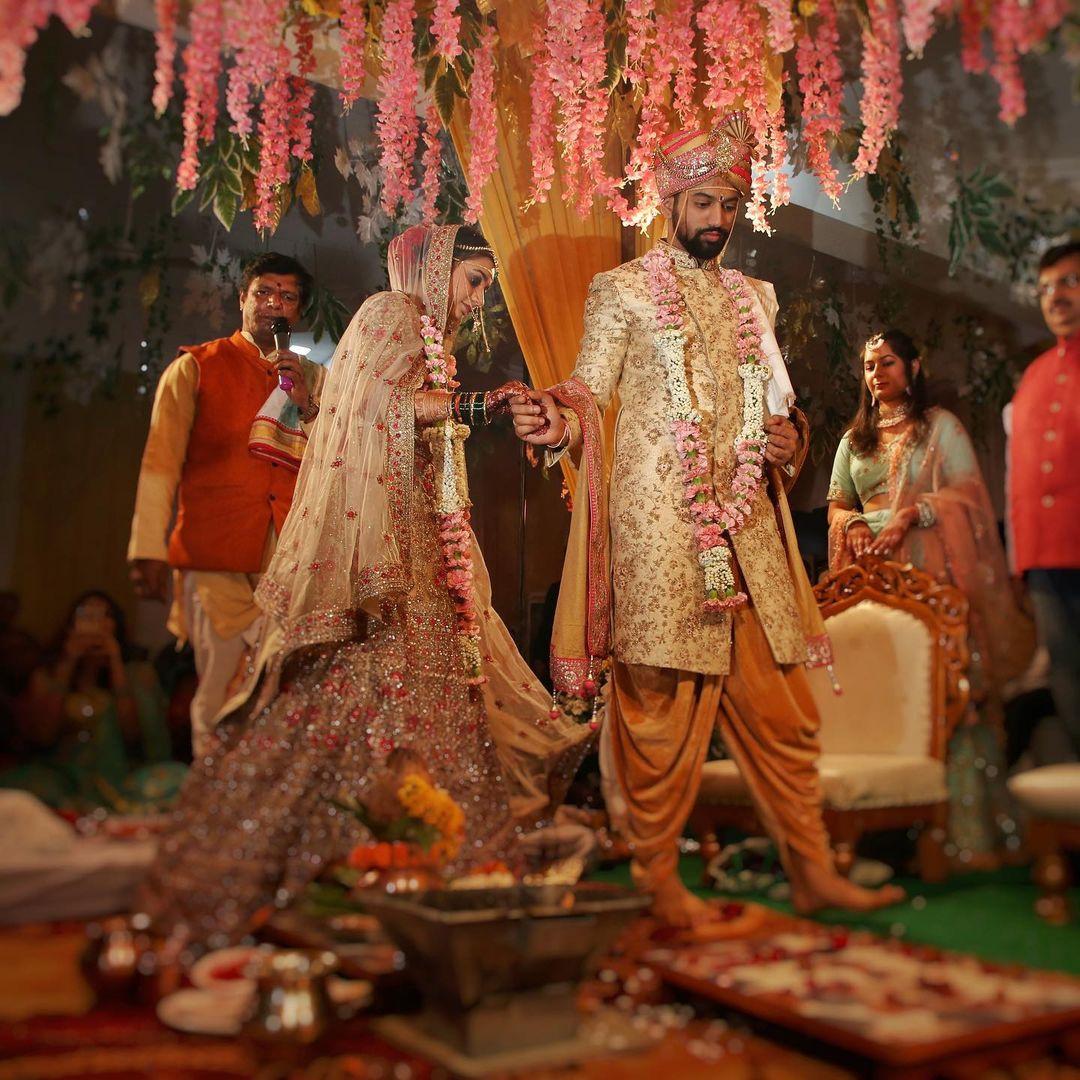
Image Courtesy: Isha Shinde on Instagram
The Saat Phere in Punjabi, Gujarati and Marwari weddings follow the Vedic rituals, having the bride and groom take 7 full circles around the fire. During the Saat phere, the groom takes the first 4 pheras followed by the bride who takes the rest 3 pheras. This gesture implies that the wife can take over and lead if the situation demands. The bride also agrees to share the responsibilities with her husband for the rest of their married life - through thick and thin.
Also Read: Decoding Odia Marriage: the Beauty of Their Traditions & Rituals
Saptapadi - Bengali Wedding
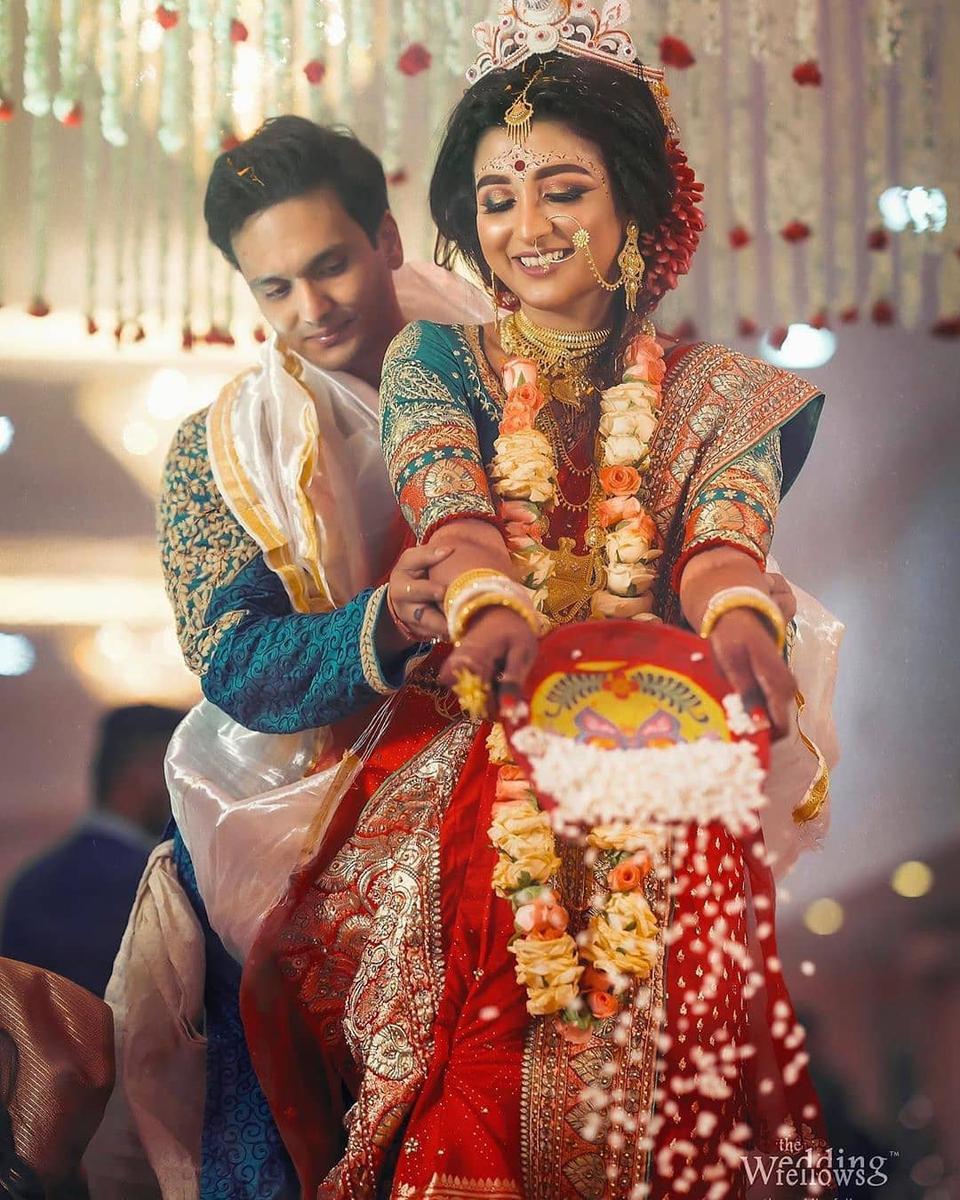
Similarly, in a Bengali wedding, the groom takes the lead of the first 4 pheras around the fire followed by the bride taking the last 3 with her beau on her tow. The Bengali Saptapadi is however different from the conventional phere that are popular in other parts of the country. The Saptapadi in Bengali weddings involves 7 betel leaves laid out in a straight sequence on the mandap floor. These betel leaves are decorated with "Haldi & kumkum" or turmeric and vermillion for piety and the after every circle that they complete, the bride is supposed to step on the leaves one at a time. The groom on the other hand moves a grinding stone called "nora" with his toe as they move forward for the new phera.
Do not confuse it with the Saat Pak. The Saat Pak is another ritual in a Bengali wedding where the bride is seated on a wooden stool and her brother lifts her to take 7 rounds of the groom - do this while she covers her face with 2 betel leaves.
Also Read: Decoding a Bengali Wedding: the Beautiful Traditions of a Biye
Saptapadi - Odia Weddings

Seven small piles of rice are made on the ground which is blessed by the priest. These piles represent Saptakil Parwatas or the seven hills that symbolise the hardships that they have to face during their married life. The bride breaks this heaps of rice with her right foot along with the groom by her side and this marks the seven steps of togetherness to begin their journey of a happily ever after. This is the Saptapadi. The Saptapadi ritual ends with the bride's brother placing puffed rice on the bride's palm, which is placed on the groom's palm) and they pour this puffed rice into the fire as a symbol of prosperity. This is mainly because the bride is considered to be a symbol of prosperity in her new home.
Laavaan Phere - Sikh Wedding

Image Courtesy: Amrit Photography
The holy book Guru Granth Sahib Ji (Baba ji) is respectfully placed at the wedding venue (Gurudwara or any other place) and the couple takes 4 pheres around the holy book.

Image Courtesy: Real Bride Shaweta Khosa
These pheres done in a clockwise direction are called the 4 Laavan and it is the most significant part of the wedding. In the above picture, you will find the meaning of each Lavan. After the Lavaan the bride and groom are considered married. These pheres are then followed by kirtan and Ardas.
Each vow and step signify a stage in the marriage that the couple will encounter. These vows sanctify the union between the two souls. The "saat pheras" represent a promise of forever - the promises that solemnises their wedding. As the bride and groom perform the praikrama around the holy fire - Agni Dev, they take the holy fire as a witness to their holy matrimony and this act is also known as "Agni Sakhsi."

As times pass by, our understanding of these rituals tends to wander. But there are many priests who will make you understand the deep underlying meanings of each of these pheras or even translate the Sanskrit vows to you as you take the 7 or 4 rounds around the fire.
Find yourself a pandit ji who is ready to guide you in the right direction as you and your partner embark on this new journey together only at WeddingWire India.





